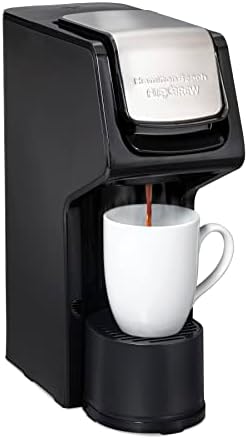From Bean to Cup: How Espresso Machines Work Their Magic
Espresso is a popular coffee drink that is known for its rich flavor and intense aroma. To create the perfect shot of espresso, it takes more than just a finely ground coffee bean. Espresso machines are the key to producing this beloved beverage. In this article, we will explore the inner workings of espresso machines and how they work their magic to turn coffee beans into a delicious cup of espresso.
How Espresso Machines Work
Espresso machines are complex devices that use pressure and heat to extract the flavor and aroma from coffee beans. The process begins with water being heated to the ideal temperature, usually between 195°F and 205°F. The hot water is then forced through a finely ground coffee bed at high pressure, typically between 9 and 10 bars, to produce a concentrated shot of espresso.
There are different types of espresso machines, including manual, semi-automatic, and fully automatic. Manual machines require the user to control the entire brewing process, while semi-automatic machines have some automated features, such as temperature and pressure control. Fully automatic machines do all the work at the push of a button, from grinding the beans to brewing the espresso.
Components of an Espresso Machine
Espresso machines are made up of several components that work together to produce the perfect shot of espresso. Some of the key components include:
- Boiler: The boiler is responsible for heating the water to the optimal temperature for brewing espresso.
- Portafilter: This is the handle-like device that holds the coffee grounds and attaches to the machine. It is essential for creating the pressure needed to produce espresso.
- Pump: The pump is responsible for creating the high pressure required to force the water through the coffee grounds.
- Group head: The group head is where the portafilter attaches to the machine. It contains a valve that controls the flow of water and is essential for extracting the coffee flavor.
FAQs
1. How do I maintain my espresso machine?
To keep your espresso machine in top working condition, it’s essential to regularly clean and descale it. This will prevent the build-up of coffee oils and mineral deposits that can affect the taste of your espresso. It’s also important to follow the manufacturer’s instructions for maintenance and use filtered water to reduce mineral build-up.
2. What type of coffee beans should I use for espresso?
For the best results, it’s recommended to use medium to dark roasted coffee beans for espresso. These types of beans are well-suited for the high pressure and temperature used in the brewing process, resulting in a rich and flavorful cup of espresso.
3. Can I use a regular coffee maker to make espresso?
No, traditional coffee makers are not capable of producing the high pressure and temperature required to make espresso. Espresso machines are specifically designed for this purpose and are essential for creating the concentrated shot of coffee that defines espresso.
4. How long does it take to brew a shot of espresso?
The brewing time for a shot of espresso can vary depending on the machine and the coffee used, but it typically takes between 25 to 30 seconds to brew a standard shot of espresso. This brewing time is crucial for extracting the flavors and aromas from the coffee grounds.
5. What’s the difference between a single and double shot of espresso?
A single shot of espresso uses around 7 grams of coffee and produces about 1 ounce of espresso. A double shot, on the other hand, uses around 14 grams of coffee and produces about 2 ounces of espresso. The main difference is the strength and intensity of the coffee flavor in each serving.
Conclusion
Espresso machines are fascinating devices that use pressure and heat to transform coffee beans into the beloved beverage known as espresso. By understanding how these machines work and the key components involved, you can better appreciate the art and science behind creating the perfect shot of espresso.
“All images and products featured on this Blog.troca.cafe are the property of their respective owners. All rights to these materials are acknowledged and reserved.”
